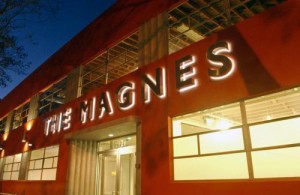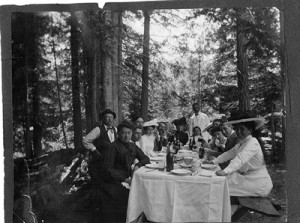Arts
Feature
The Arts: Old-New Museum

Images courtesy of the Magnes Collection of Jewish Art and Life
The Magnes, which makes its debut this month, is the latest incarnation of Berkeley’s Judah L. Magnes Museum, named after the Bay Area-born reform rabbi and first president of Hebrew University of Jerusalem. Created in collaboration with The University of California, Berkeley, as part of the university’s Bancroft Library, the building is designed not only to house the Magnes’s collections, but also to serve as a research facility and community center. Its streamlined, sleek, inviting new image couldn’t be more different than its previous one—the oldest Jewish museum in the West, which was once housed in a rambling shingle mansion on a residential street.
A sign at the entry asks, “What Is The Magnes?” And other signage supply some answers: “An artifactory,” “an un-museum,” “an objectarium,” and “a gatherary”—pointing out the many aspects of the museum.
Whimsy aside, the Magnes, which will celebrate both its grand opening and the museum’s 50th anniversary on January 22, is a new kind of space—open, accessible and affiliated with the University of California, which took over the museum’s collections and its management in 2010. (Upon its affiliation with the university, the institution divided into The Magnes and the Magnes Museum Foundation.)
At the entrance, a large mosaic from a Holocaust memorial points backwards: “In Remembrance is the Secret of Redemption.” Everything else in the building points to the future. The entrance lobby connects with glass walls to the building’s other spaces—the main exhibition gallery, areas for lectures and classes, a conference room, offices, shops, preparation rooms, storage areas. The research collection is open to anyone. “We wanted to turn the museum inside-out,” says Alla Efimova, director of the Magnes. In most museums, she explains, the displays are the highlight, with the other 95 percent of their collections in storage. Here, the research collection is open to anyone.

part of ‘The Magnes Effect’ exhibit.
The museum was founded in 1962 as the Judah L. Magnes Memorial Museum by Seymour and Rebecca Fromer in one room of the Oakland-Piedmont Jewish Community Center. In 2002, it entered into a short-lived marriage with the Jewish Museum San Francisco (now the Contemporary Jewish Museum). In 2007, it bought the printing plant with a view of moving downtown. In 2010, the museum donated its collection to the university.
The quaintness and tranquillity of the old museum came with a price: Because the building had landmark status, modifying it to suit American with Disabilities Act requirements was impossible. It lacked space for large public programs. In time, its educational and publishing functions were partly taken over by other institutions, such as the San Francisco Jewish Community Center, while the East Bay Jewish community lacked a central gathering place accessible by rapid transit. Now, the university connection facilitates research based on the collection; two student fellowships, one undergraduate and one graduate, will be offered annually.
Among the opening exhibitions will be “The Magnes Effect: Five Decades of Collecting,” with such highlights as Kiddush cups and a 19th-century wedding gown from Rhodes, all formerly in storage; a painting by Sarah Samuels Stein (Gertrude Stein’s sister-in-law); and a Chagall etching; “Honoring Our Roots,” dedicated to the memory of founder Seymour Fromer; and a multimedia presentation by Israeli composer and installation artist Emmanuel Witzthum, the museum’s first artist-in residence who will be lecturing at the museum and in the university’s music department. Called “Dissolving Localities: Berkeley Jerusalem,” the exhibit examines layers of Jerusalem’s—and Berkeley’s—sights and sounds.
It’s the kind of collaborative model, says Efimova, that the two institutions are trying to develop.
The Magnes is located at 2121 Allston Way, Berkeley, California; www.magnes.org.









 Facebook
Facebook Instagram
Instagram Twitter
Twitter
Leave a Reply